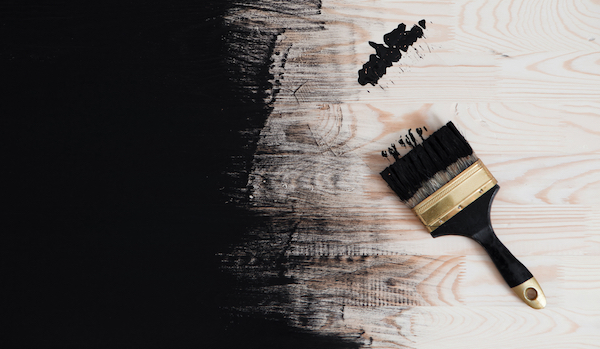Don't miss the latest stories
Here’s What A Room Painted In World’s Blackest Acrylic ‘Musou Black’ Looks Like
By Mikelle Leow, 11 Jan 2021
Subscribe to newsletter
Like us on Facebook

Image via Shutterstock
It’s certainly a fantasy for many to be able to paint their walls pitch-black. While a cool look, it wouldn’t be practical to work in a home office where it feels like you’re being enveloped in darkness the whole time.
Luckily, one YouTuber has put this idea to the test so you don’t have to. James J. Orgill of The Action Lab channel has created an entire room solely to paint it with Musou Black, the world’s blackest water-based acrylic paint.
Musou Black, developed and distributed by Koyo Orient Japan, is available to the public and is able to trap 99.4 percent of light. In contrast, Anish Kapoor’s famous Vantablack material can absorb 99.96-percent light, but it can only be used in a lab setting and exclusively belongs to him. Vantablack’s darkness has since been swallowed by MIT’s Singularity Black, which can deflect “at least” 99.995-percent direct light.
The closest match to the commercial Musou Black is Stuart Semple’s ready-to-buy Black 3.0, which can trap 99-percent incoming light. The artist had taken a stand to Kapoor’s monopoly of Vantablack by creating an open-source version that anyone can have access to.
Orgill, whose day job is an R&D engineer and has a PhD in chemical engineering, put together some walls out of cardboard before decking them in the Musou Black acrylic paint to create what he described to be the “world’s darkest room.” When he was done, the whole area looked like what you would expect: complete darkness.
Since a room needs lighting, the YouTuber switched on a lightbulb in the space, which interestingly created an effect similar to the iPhone’s studio photography mode.
Describing what it was like to stand in a Musou Black room, Orgill shared, “It’s almost like being in space, where you can only be illuminated directly from the light source, not from any reflected light.”
It’s riveting, no doubt, but how long can one stay in a pitch-black space before the loneliness takes over?
If you’re keen to get a bottle of Musou Black yourself, the water-based acrylic paint will take you back US$25, excluding delivery costs from Japan.
For obvious reasons, though, the shade wouldn’t be productive for a work-from-home setting. Here are some other colors to use or avoid in your home office.
[via Digg, cover image via Shutterstock]
Receive interesting stories like this one in your inbox
Also check out these recent news





